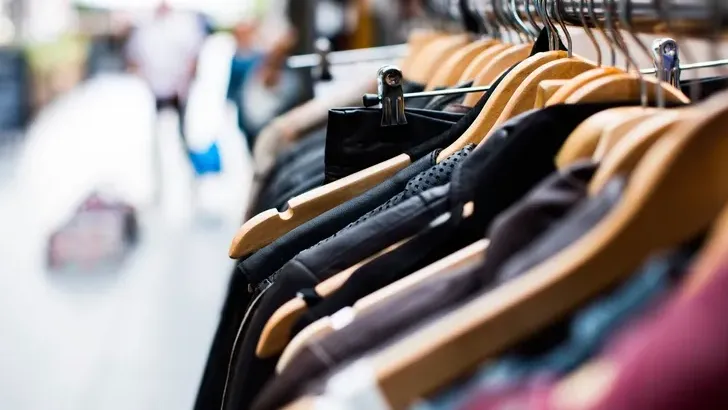Let’s talk about one of the biggest myths in fashion: the idea that the hourglass figure is the default. You’ve heard it. You’ve seen it. But here’s the truth: only 8% of women naturally have that shape. And yet, that’s still the standard so many brands use to design clothes. This gap between fantasy and reality is why plus size fashion sizing continues to fail so many shoppers, leaving us plus size women with limited choices and frustrating shopping experiences.
So, what happens when your body doesn’t follow that narrow mold? You’re left with clothes that pinch in the wrong places, gape where they shouldn’t, and don’t even come close to celebrating your shape. This disconnect between fashion fantasy and real-world bodies is at the root of so many fitting room frustrations and it’s time we called it out.
Let’s break it down.

The Reality Check: Who Are We Designing For?
The average American woman wears a size 16 to 18. That’s not a guess… that’s from a study published in the International Journal of Fashion Design, Technology and Education. And yet, many brands still top out at a size 14 (if we’re lucky). This leaves a massive chunk of the population with limited options, especially when it comes to clothes that are fashionable, not just functional.
And don’t even get us started on the runways. At Fashion Week for Autumn/Winter 2023, just 0.6% of models were plus size (US 14+). The majority of the looks, over 95%, were shown in sizes US 0 to 4. That’s not just out of touch. That’s deliberate exclusion.
Plus Size Fashion Sizing Isn’t Just About Scale… It’s About Shape
Here’s where the fashion industry gets it twisted. You can’t just “make a size 4 into a 24” by scaling up the measurements. Our bodies don’t grow like that. Real curves, rolls, hips, and bustlines don’t follow a mathematical formula. That’s why “extended sizing” often still misses the mark; it’s not just about size, it’s about proportion.
Two women can wear a size 20 and have completely different bodies. One may carry more weight in her hips, another in her bust. That’s why we need designers who understand fit for all kinds of curves… not just those trained on a straight-size block.
Yes, Plus Size Fit Models Exist and They’re Crucial
Let’s bust another myth while we’re here. Yes, there are plus size fit models and they’re the heroes behind the scenes making sure clothes actually work for bigger bodies.
They test the fit, movement, comfort, and drape of garments before they ever hit the sales floor. Without them, you end up with those weirdly tight arms, baggy busts, or waistbands that roll down every time you sit. Sound familiar?
Research backs this up: when plus size shoppers see bodies that look like theirs, they’re more likely to buy and feel confident about their purchase. And yet, most brands still rely on one “ideal” fit model that doesn’t represent the majority of their customers. It’s no wonder fit is such a mess.
The Try-On Game That Never Ends
Shopping while plus means navigating an exhausting maze of size charts, guesswork, and returns. Some women order multiple sizes just hoping one will fit. Others avoid shopping altogether because the emotional tax is just too high.
And when it comes to special occasion wear? Forget it. Sample sizes in boutiques are rarely over a 10, so larger plus size customers either don’t get to try anything on or spend extra time and money altering something that kind of fits.
The Cost of Being Left Out
We hear all the excuses: it’s too expensive to grade for plus sizes, the demand isn’t there, it’s too “complicated.” But the numbers tell a different story.
The global plus size market was worth $114 billion in 2023, and it’s projected to keep growing. This isn’t niche. This is the majority. And brands that continue to ignore this market? They’re not just missing out on profits… they’re missing out on customer loyalty and cultural relevance.
When Fit Fails, Confidence Suffers

This is bigger than returns and hemlines. When an entire industry acts like your body doesn’t exist or shouldn’t exist, it chips away at your confidence. Studies show that over 60% of models are told to lose weight, and more than half engage in disordered eating. The message is clear: fit in or be left out.
For many of us, fashion is more than just clothes. It’s how we show up in the world. It’s our armor, our identity, our joy. And when we can’t access it, that hurts.
There’s a Better Way
Some brands are finally starting to get it. They’re hiring plus size fit models, using flexible fabrics, offering adjustable sizing, and designing with real proportions in mind. They’re investing in tech like 3D body scans and virtual try-ons. They’re listening and learning.
But let’s be clear: real change isn’t about tacking on a few extra sizes and calling it “inclusive.” It’s about integrating body diversity into every part of the process; from product development to marketing to who gets to walk the runway.
It’s Time to Design for All of Us
Fashion doesn’t need to fix our bodies; it needs to fix its bias. Two-thirds of American women are plus size. We deserve more than scraps. We deserve beautiful, well-made clothes that fit our bodies… not just a resized version of someone else’s.
Want our money? Give us clothes that respect our curves.
Want our loyalty? Show us bodies that look like ours.
Want our attention? You’ve got it… now do something with it.

